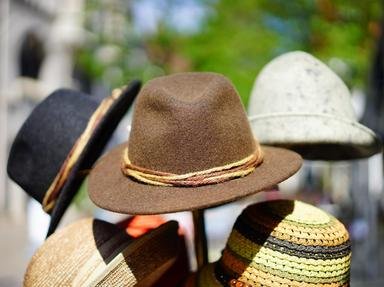Quiz Answer Key and Fun Facts
1. Made of sheep skin and fur, studded with blue stones, a traditional headwear of women in Indian Himalayan regions.
2. Standard ceremonial felt hat, brim pinned up on one side, worn by the Australian military.
3. A military head-dress made of fur, worn by Hungarian hussars; also known as a Fur Shako.
4. Four-pointed, crowned hat, made of stiffened material, worn by Polish infantry and cavalry forces.
5. Medieval headgear usually made of fine white linen or silk, worn by women, and covering the head and around the neck and chin.
6. A cap with a soft, round, flat crown, made from crocheted cotton, wool or felt.
7. Woven conical plant-fibre hat trimmed with leather, worn above a turban by people of West Africa.
8. Worn by Terry? A cap with bells donned by a court fool, shaped like a monk's cowl with donkey's ears.
9. Literally means 'dome'; traditionally worn by men as a symbol of awareness of, and submission to, a higher entity.
10. Traditional folk headgear of the Iberian Peninsula, made from lamb skins and often worn by matadors.
Source: Author
VegemiteKid
This quiz was reviewed by FunTrivia editor
trident before going online.
Any errors found in FunTrivia content are routinely corrected through our feedback system.

